The municipality does a great job of bringing the water you receive up to Federal Standards for Sanitization. That means that when the water leaves the plant, there should be no living organisms in the water. So that’s good enough, right?
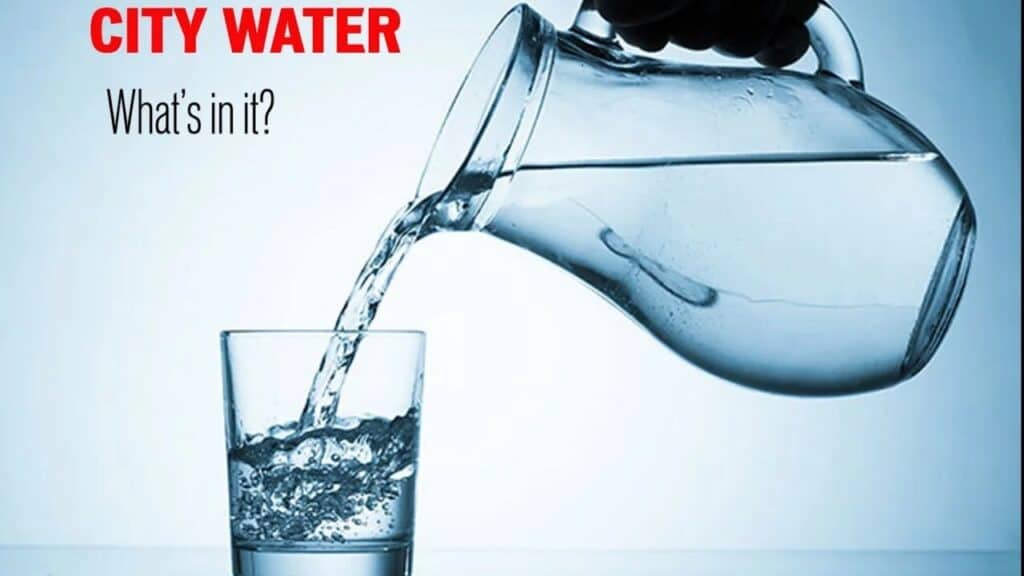
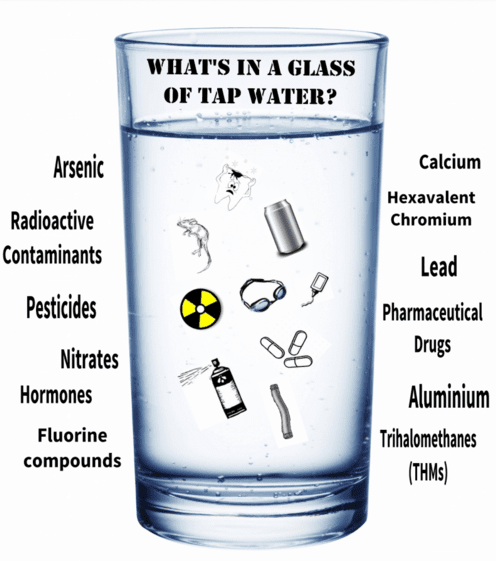
Calcium, magnesium, sulfur, iron, lead, arsenic, uranium and a handful of other things that are at acceptable levels according to guidelines. You can find out what’s left in your water by going to the website ewg.org. There you can put in your zip code and read the reports on what is in your water and see your municipalities’ test results.
Many of these contaminates are known problems that have yet to be dealt with. We can eliminate these from your water at home now.
How you can tell by looking if you have Hard Water.
In addition to all scaling you CAN see, there is scaling going on INSIDE your pipes and fixtures too including your dishwasher, washing machine, water heater and refrigerators with ice makers. The cost of repairs and replacement can add up fast.
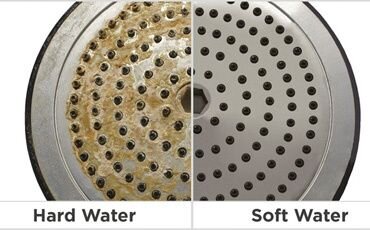
If there are stains or buildup on your sinks and bathtubs, if you have to use large amounts of soap to clean dishes or wash your hair or if your water tastes or smells odd, you probably have hard water. If left untreated, the minerals in hard water will cause yellow stains on plumbing fixtures and be deposited as scale, eventually clogging plumbing and shortening the life of appliances like washing machines, water heaters and dishwashers. Scale deposits not only cut down on the efficiency of these appliances, they cost you money, increasing both energy and maintenance bills.
A Water Softener functions on ion exchange. Hard water minerals like magnesium and calcium are cations, or have a positive charge. The Water Softener has an anionic- negatively charged- resin bead. As the positively charged minerals pass through the negatively charged resin, the hard minerals are attracted to the resin beads. This ion exchange removes the hard minerals from your water, leaving soft water that is ready for use. Over time, the resin will attract all the cations it can hold and will not be able to attract more until it has been cleaned of mineral. This requires the softener to regenerate, or clean the resin.
To recharge and clean the resin, salt brine is used. The common misconception is that salt softens the water. Salt is only used to make a brine that is injected into the Water Softener, recharging the resin in a 1 to 1 exchange for the hard minerals and then flushed out. Sodium attracts the hard mineral removing them from the resin beads. This is then washed away through automatic back-washing. Regeneration timing and the amount of sodium needed depend on the use of water in your home and the hardness level of your water. Salt is the inexpensive option for regeneration. However, other products are available, such as Potassium Chloride.
We use the best equipment out there to save water, save salt and give you peace of mind with your investment.
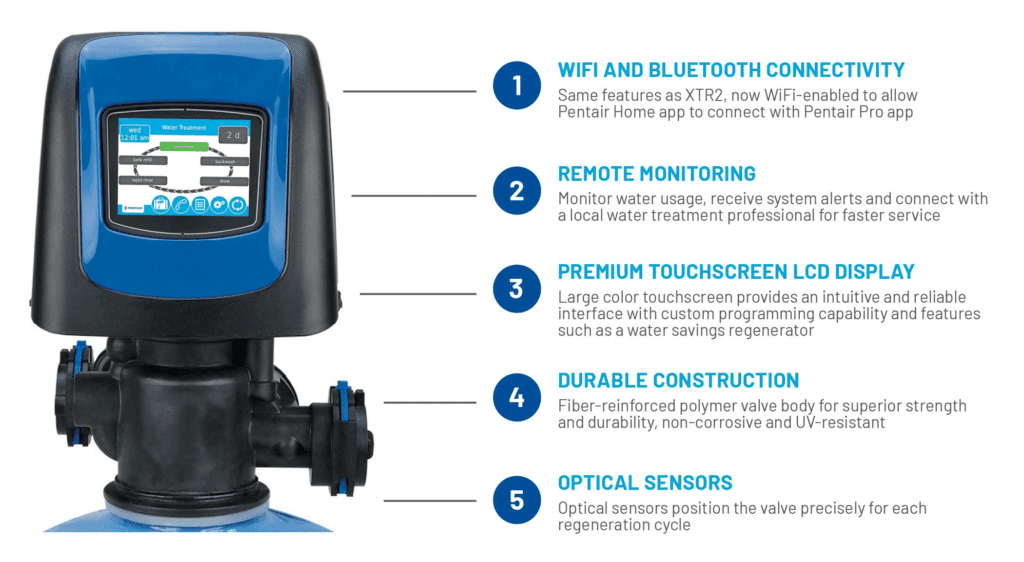
Water Softener and Filtration experts will take water samples and make measurements of certain indicators in the water. A water treatment expert will want to know how many grains of hardness your water has when it enters your home. They will want to know not only how many people live in your home, but their approximate schedules of water use. For example, if you are a family of four where everyone gets up in the morning and showers within an hour of each other and before you leave the house you start the wash or the dishwasher or both, you need a different softener from say a one-bedroom condo with a retired person living there.
A resin-based exchange system that uses sodium is still the most effective way to remove hardness (calcium & magnesium) from your water supply. They can also remove moderate amounts of ferrous iron and colloidal manganese.
There are a few things you need to consider before selecting this method of removal.
Sizing: Family size, home size, service flow rate, and chemistry are all important factors in sizing your new home system.
What is the intended maximum flow rate in your home? Why is this important… a single cubic foot of media has a maximum flow rate of 5gpm (gallons per minute). So a 1cuft system is a 5gpm system, 1.5cuft = 7.5gpm, 2.0cuft = 10gpm
Don’t know your flow rate… Fixture counts and the number of people is a practical way when you have an endless water supply.
If you have ferric iron, high iron, and or high manganese, H2S, Hydrogen Sulphide, contact us with the details and we can find the right variation or supplemental system for you.
Give us a call at 928 706 0546 and we can do a survey on your home and your needs.
Advanced technology for advanced performance! Our Softener Valves give the user the benefit of unique programming and diagnostic features. One key NEW feature is the on-board super capacitor, which keeps the correct time during a power outage up to 48 hours! The programming is stored in memory and will not be lost due to power outages. You may also program the system’s regeneration sequence individually to maximize the efficiency and keep water use to a minimum.
Another characteristic is the system keeps time electronically, so the drive motor only runs during regeneration, saving the possibility of motor burn-outs and running more reliably. This system can cut salt and water use by as much as 40%! Unlike timer-based systems, the meter-demand system regenerates only when necessary. The end result? Significant savings in both water and salt.**
** Compared to a system with a timer-based regeneration.
Electromagnetic water softening is supposedly a type of chemical-free anti-scale water treatment. Instead of completely removing the magnesium and calcium from hard water, electromagnetic water softeners aim to change the way that the magnesium and calcium interact with appliances, pipes, and other surfaces. But does it work?
In 1977, Duffy of Clemson University concluded in his doctoral thesis, “Investigation of Magnetic Water Treatment Devices,” that magnetic water treatment devices had no significant effect on the formation of limescale on pipes and appliances.
In 1981, Gruber and Carda of the South Dakota School of Mines and Technology published their “Performance Analysis of Permanent Magnet Type Water Treatment Devices,” which assessed the efficacy of magnetic water treatment on tanks, heating rods, sensors, and more. They came to the conclusion that “there is no measurable effect… resulting from the selected magnetic devices.”
In 1985, Alleman of Purdue University, in “Quantitative Assessment of the Effectiveness of Permanent Magnet Water Conditioning Devices,” tested treated water from six different magnetic water treatment units for a number of measures, including temperature, conductivity, boiling point, pH level, alkalinity, hardness, calcium composition, and scaling effect.
In 1996, researchers from the Lawrence Livermore National Laboratory evaluated a magnetic water treatment device, the “Descal-A-Matic,” and found that there was “no beneficial effect when using the magnetic device” in comparison with no water treatment device at all.
In 2001, the Water Quality Association established a task force that reviewed over 100 electromagnetic water softening studies. Only 34 met their criteria for scientific validity. They ultimately stated that there’s very little evidence supporting their efficacy.
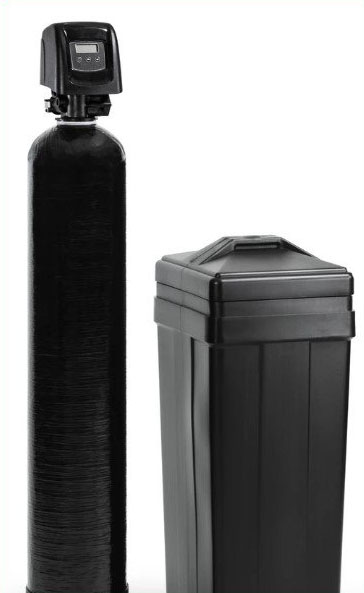
Monday
Friday
9 am – 3 pm
Saturday by appointment
–
Sunday closed
© Copyright 2023, PBJ Water, LLC. All Rights Reserved.